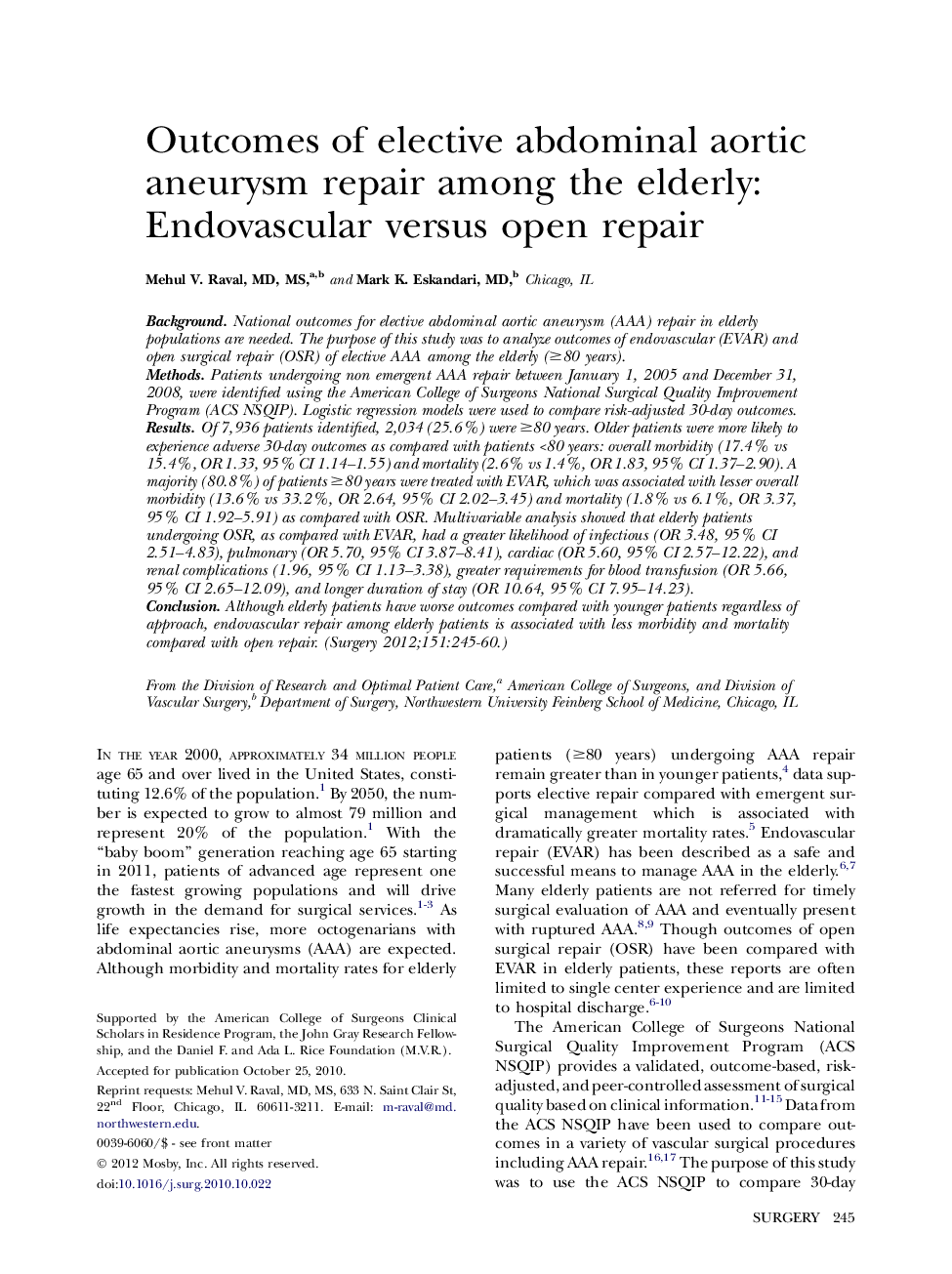| Article ID | Journal | Published Year | Pages | File Type |
|---|---|---|---|---|
| 4308207 | Surgery | 2012 | 16 Pages |
BackgroundNational outcomes for elective abdominal aortic aneurysm (AAA) repair in elderly populations are needed. The purpose of this study was to analyze outcomes of endovascular (EVAR) and open surgical repair (OSR) of elective AAA among the elderly (≥80 years).MethodsPatients undergoing non emergent AAA repair between January 1, 2005 and December 31, 2008, were identified using the American College of Surgeons National Surgical Quality Improvement Program (ACS NSQIP). Logistic regression models were used to compare risk-adjusted 30-day outcomes.ResultsOf 7,936 patients identified, 2,034 (25.6%) were ≥80 years. Older patients were more likely to experience adverse 30-day outcomes as compared with patients <80 years: overall morbidity (17.4% vs 15.4%, OR 1.33, 95% CI 1.14–1.55) and mortality (2.6% vs 1.4%, OR 1.83, 95% CI 1.37–2.90). A majority (80.8%) of patients ≥80 years were treated with EVAR, which was associated with lesser overall morbidity (13.6% vs 33.2%, OR 2.64, 95% CI 2.02–3.45) and mortality (1.8% vs 6.1%, OR 3.37, 95% CI 1.92–5.91) as compared with OSR. Multivariable analysis showed that elderly patients undergoing OSR, as compared with EVAR, had a greater likelihood of infectious (OR 3.48, 95% CI 2.51–4.83), pulmonary (OR 5.70, 95% CI 3.87–8.41), cardiac (OR 5.60, 95% CI 2.57–12.22), and renal complications (1.96, 95% CI 1.13–3.38), greater requirements for blood transfusion (OR 5.66, 95% CI 2.65–12.09), and longer duration of stay (OR 10.64, 95% CI 7.95–14.23).ConclusionAlthough elderly patients have worse outcomes compared with younger patients regardless of approach, endovascular repair among elderly patients is associated with less morbidity and mortality compared with open repair.
